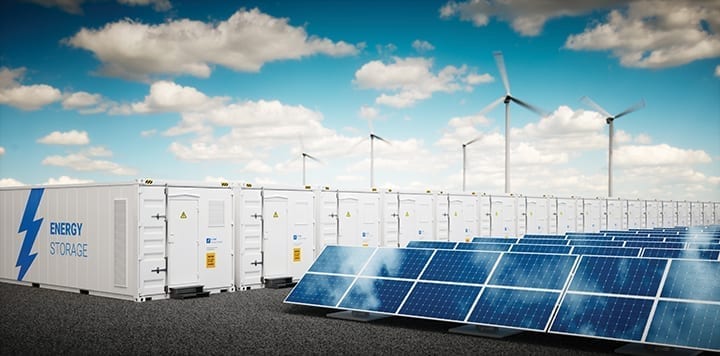Idiot or Maniac: Where Does Your Power Company Fit in the Discussion?
Credit to Author: Aaron Larson| Date: Tue, 01 Nov 2022 04:16:00 +0000

It’s kind of exciting to be able to write that events are back in full swing. In case you missed it, POWER hosted the co-located Experience POWER, Distributed Energy Conference, and HydrogeNext events, Oct. 3–6 at the Gaylord Rockies Resort and Convention Center in Aurora, Colorado, just outside of Denver. The events were well attended and things seem to be much closer to normal than I have experienced since COVID-19 disrupted the conference world in early 2020. In fact, this was the first time since the pandemic began that I’ve traveled and haven’t been required to wear a facemask. Airlines, airports, and other venues are essentially back to normal. It was very refreshing.
Engaging Speakers
With three shows in one location, there was a lot of great content to take in. Among the keynote addresses on Oct. 4 was a presentation by Duane Highley, PE, president and CEO of Tri-State Generation and Transmission Association. Highley began by noting that Tri-State is a “very poorly named cooperative.” That’s because it actually serves customers in four states—Nebraska, Wyoming, Colorado, and New Mexico. The service area of Tri-State’s 42 utility members covers about 200,000 square miles from the northern border of Wyoming to the southern border of New Mexico. The footprint is larger than the state of California, but with far fewer people—a little over a million consumers.
Highley’s presentation focused on the clean energy transition his company is going through. One question he tried to answer was if the transition was progressing too fast or too slow. To do so, Highley referred to the late comedian George Carlin. “He said: Have you ever noticed that anybody driving slower than you is an idiot, and anyone going faster than you is a maniac? And so, it’s nearly impossible to drive when you’re surrounded by idiots and maniacs. And I think that’s a very good corollary for our business,” Highley said.
In January 2020, Tri-State released its Responsible Energy Plan. The plan provides a blueprint to “expand renewable generation and reduce greenhouse gas emissions while ensuring reliable, affordable, responsible electricity” for Tri-State’s members and their communities. “So, Tri-State, as a utility in the West serving these very diverse states with a diverse membership of 42 electric utility non-profit cooperative systems, we’re being pulled between those people who think we’re going too fast in an energy transition, and those who think we’re going too slow,” said Highley. “The truth really lies in between,” he said.
An Important Mission
Tri-State’s simple forward mission statement is “reliable, affordable, responsible, flexible.” Reliability comes first. “We’ve got to keep the lights on,” said Highley. But affordability is a close second. “As soon as the lights are on, the thing people care about most is what it costs,” he said.
“But, then, we also have to be responsible to the air, land, and water, and making a clean energy transition—be responsible to our employees and the communities in which they work, and to those communities that are supporting us in the energy transition. All while trying to get more and more flexible, so that our members have more options on how they might power things,” said Highley.
He explained that Tri-State is following a roadmap to reduce greenhouse gases and is retiring coal plants in a responsible manner. It retired San Juan in 2017, Nucla in 2019, and Escalante in 2020, and it plans to retire Craig between 2025 and 2029. “By doing that, we will achieve an 80% reduction on the carbon dioxide emissions in Colorado from that 2005 baseline,” he said. “We’re also reinvesting in those communities that were formerly energy dependent communities with economic development and by putting solar projects specifically in those communities to restore tax base that’s lost.”
Supporting Communities with Jobs
Yet, while investing in solar restores some of the tax base, it doesn’t return all of the jobs to areas affected by coal plant closures. “That’s why we’re also working on hydrogen development,” said Highley. He surmised that people working at coal plants don’t want to become coders, for example, but rather, they want to keep doing the kind of work they’ve been doing. “By developing clean, green hydrogen or blue hydrogen, they can redeploy those same skills in the same kind of work, but now be part of the clean energy economy,” he said.
Highley said Tri-State is working with a developer that wants to convert the Escalante plant to burn blue hydrogen. And at Craig, the company is talking with a consortium of Western states to try to get it in the running for a demonstration on green hydrogen, because “the Craig plant in western Colorado has been evaluated as the very best site in this country for the development of green hydrogen,” he said.
Whether Tri-State is following the proper timeline, or moving too fast or too slow, is debatable. But at least it has a plan, that would seem to put the coop at least one step ahead of some of the other idiots and maniacs.
—Aaron Larson is POWER’s executive editor.
The post Idiot or Maniac: Where Does Your Power Company Fit in the Discussion? appeared first on POWER Magazine.